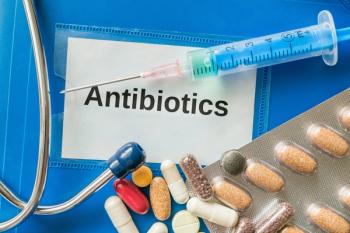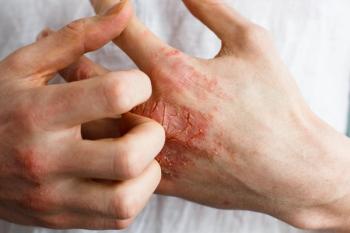
Pharmacy Supply Lines Are Still Shaking After Storm Passes
Two hurricanes devastated the U.S. supply chain, affecting pharmacies all over-and leaving many to wonder what’s next.
Interruption in manufacture and delivery for vital products can hit all pharmacies hard, in both health systems and the community. The patient is the last link in the supply chain, but pharmacists are a vital connection to ensuring continuity of medications and supplies.
What makes the devastation to Puerto Rico so destructive to this supply chain is the concentration of drug and medical device manufacturing there; about 50 companies that make pharmaceuticals and another 40 that make a variety of medical devices including pacemakers, insulin pumps, and blood collection devices.1 About 8% of medicines used in the United States by dollar value are made in Puerto Rico, as are about 25% of all drugs exported from the United States.
Related article:
Americans don’t realize the extent to which pharmaceutical production is concentrated on Puerto Rico, said David Friend, MD, MBA, Managing Director and Chief Transformation Officer at the
Supply chain disruption is a public safety concern, according to a BDO Knows Healthcare Alert.2 The question is not if, but when a natural disaster will break the chain.
“This is a decades-old problem that we experienced before,” said Fred Pane, RPh, FASHP, formerly an Administrator of Pharmacy at
In the wake of the hurricanes, government agencies have expressed alarm. In his testimony before a Congressional subcommittee,
Related article:
The FDA is closely monitoring about 30 products that are critical and made only or primarily in Puerto Rico, he said. Of those, 14 are “sole-source products,” which means they are made in only one location and there are no good alternatives that can be used, he added.1
One member of the subcommittee had a personal story of the supply chain disruption. Rep. Diana DeGette (D-CO) stated: “If anybody has any concern this is impacting all American families, my daughter who is a Type 1 diabetic just got a letter from Medtronic last week saying her insulin pump was not going to arrive because of the problems in Puerto Rico.”
Up next: What's happening, and how it affects you
The Devastation and the Power Failure
Although they left vast areas of destruction on the rest of Puerto Rico, Hurricanes Irma and Maria did not do large amounts of damage to most pharmaceutical plants; most reports said the factories had only minimal damage.
However, it is not so much the damage to the factories, but lack of electrical power that will be the confounding factor in any recovery to the industry on the island. Puerto Rico’s entire energy grid went down and it is still largely disabled. At press time, weeks after the storm, the power grid was reported to be operating at just over 40% capacity. The failure of the electrical grid means that even factories with no damage are using generators to remain semi- operational. Gottlieb reported that most firms were operating at 50% or less of capacity in his testimony.
Related article:
“For the moment, they are trying to use generators, but generators are designed to last a couple of days, not months and years, to power factories,” Friend told Drug Topics. Emergency generators also need fuel that has to be shipped in and then trucked to the plants, he added.
Even after the power grid comes back online and electricity is restored to the pharmaceutical manufacturing plants, getting them back up to being fully operational is not going to be swift or easy, Gottlieb said.
The FDA is working with HHS and the Army Corps of Engineers to prioritize a handful of critical facilities, but that the power problems may last into the first quarter of 2018.
Pharmacies on the island were also affected. Walgreens has 120 retail pharmacies in Puerto Rico, according to Phil Caruso, Media Relations Manager with the chain. Nearly all pharmacies have a permanent backup generator, he noted, and by late October, 90 had reopened.
Which Products Will be Affected?
No list of drugs and devices that could be affected has been issued. The names of the drugs and devices that could go into short supply or become unavailable is proprietary and neither the industry nor the FDA will make them public. “This compounds the problem,” said Friend. “We don’t know what the shortage is or when it is going to hit.” It is possible some drug shortages will not be known until they occur, he added.
Joseph M. Hill,
Related article:
One company with production in Puerto Rico is Baxter. Baxter’s three manufacturing sites in Puerto Rico sustained minimal structural damage from Maria, and were able to resume limited production using diesel generators, according to a company statement.3 In Puerto Rico, Baxter makes Mini-Bag and Mini-Bag+ diluent bags in 50 and 100 mL sizes, used primarily in health-system pharmacies for compounding or admixing.
“The big thing on everyone’s mind is the shortage of Mini-Bags,” Hill said, “That shortage has gone into full effect.”
The FDA is allowing
With no word on what might go into short supply, the only recourse for pharmacists is to be aware that shortages may occur. “The concern of potential drug shortages has always been a priority for emergency managers and public health officials,” said Nicolette Louissaint, PhD, Executive Director of Healthcare Ready, formed by trade groups in the biopharmaceutical supply chain after Hurricane Katrina. “As of now, no significant long-term threats have been reported by the FDA.” she told Drug Topics in an email.
The Fragility of the Supply Chain
The concentration of pharmaceutical production in Puerto Rico came about because of tax breaks that were offered by the federal government in the 1970s to companies that set up factories there. These tax breaks were phased out in 2006, but most companies have kept their factories in place.
Hurricane Maria laid bare two main issues with the pharmaceutical and medical device supply chain, said Friend. “Problem 1 is that the supply chain has not been managed for these kind of disasters. Problem 2 is that these products require a reliable power supply.”
A drug company cannot easily move production from one factory to another, Friend said. “It is not easy to say ‘We can’t build something in Puerto Rico, so we will move [production] to Philadelphia.’ Regulations make it difficult.”
The industry has set up a system where important drugs and products are single source and that source is in a location with a history of major storms, Friend said. “They did not understand the risks that they had taken and now we are faced with inability to supply products,” he stated.
The risks of supply-chain disruption from any large-scale disaster may need to be evaluated by regulatory agencies. “As part of the FDA approval process of manufacturing facilities, one of the questions that should be asked is ‘Is this area safe from disasters and if not, how much of the company’s manufacturing is done there, and if it goes down, what will the impact be on patient care and the supply chain?’” said Pane.
Related article:
Natural disasters can happen anywhere. Blizzards have disrupted deliveries to pharmacies for days, for example. “In our area, we provide adequate staffing before a predicted storm hits to handle the up to 50% increase,” said
Newer practices with inventory and delivery also play a part. Pharmacies in hospitals and other health-care facilities once kept larger inventories of products they needed, but have moved to keeping less stock and depending on “just-in-time” deliveries, Friend said. A just-in-time system may almost always work well, but it means there is little or no buffer when the supply chain breaks for any reason. “This is a ubiquitous problem and it is just that it is magnified in pharma,” he said.
How Long?
As the shortages from Puerto Rico hit, and if they are as severe as many predict, the FDA is ready to work with companies to alleviate them, Gottlieb said.1 The agency is working with manufacturers to obtain more generators and fuel to power them. It is also looking for ways to obtain critical products from elsewhere. “We address drug shortages through the careful and selective importation of alternative supplies from other approved manufacturing sites and reliable markets,” he said.
“What I am reading is that this could go on 2 months, 5 months, 6 months, a year. The answer is, who knows?” Friend said. “But it is going to be very dependent on how quickly they get the power grid up.”
Friend predicted there will be many waivers issued that will allow importation of drugs from other parts of the world. “But I don’t think that they are going to wait until there are no drugs left,” Friend said. Gottlieb will push to get things done, he added.
No two disasters are alike, but health-care systems should prepare for possible disruptions, Louissaint said. “Health-care facilities should work with their distributors and partners along the supply chain to ensure that their business continuity plans are in sync and lines of communication remain open during an emergency response.”
References
1. Gottlieb S. Testimony of Scott Gottlieb, MD, Commissioner of Food and Drugs. Available at http://docs.house.gov/meetings/IF/IF02/20171024/106530/HHRG-115-IF02-Wstate-GottliebMDS-20171024.pdf. Accessed on Oct. 29, 2017
2. BDO Knows Healthcare Alert. Irma, Maria highlight pharma’s need to balance supply chain October 2017. Available at https://www.bdo.com/insights/industries/healthcare/irma,-maria-highlight-pharmas-need-to-balance-sup. Accessed on Oct. 27. 2017.
3. Baxter. Baxter provides update on Puerto Rico recovery status post Hurricane Maria. Available at https://www.baxter.com/news-media/newsroom/press-releases/2017/10-12-17-baxter-provides-puerto-rico-update.page. Accessed on Oct 24, 2017.
Newsletter
Pharmacy practice is always changing. Stay ahead of the curve with the Drug Topics newsletter and get the latest drug information, industry trends, and patient care tips.





























































































































